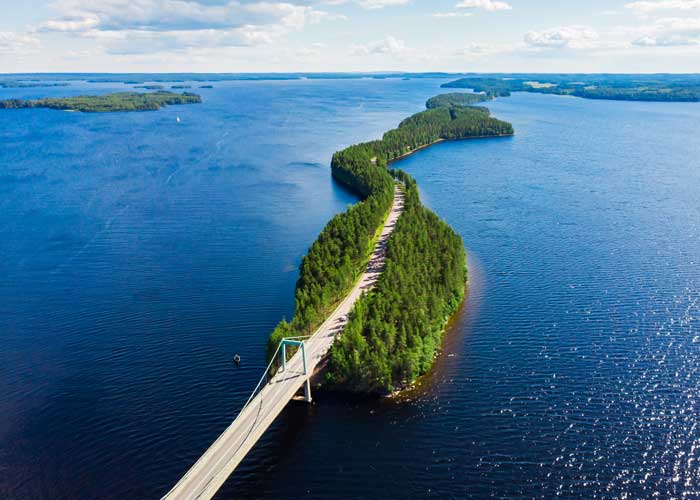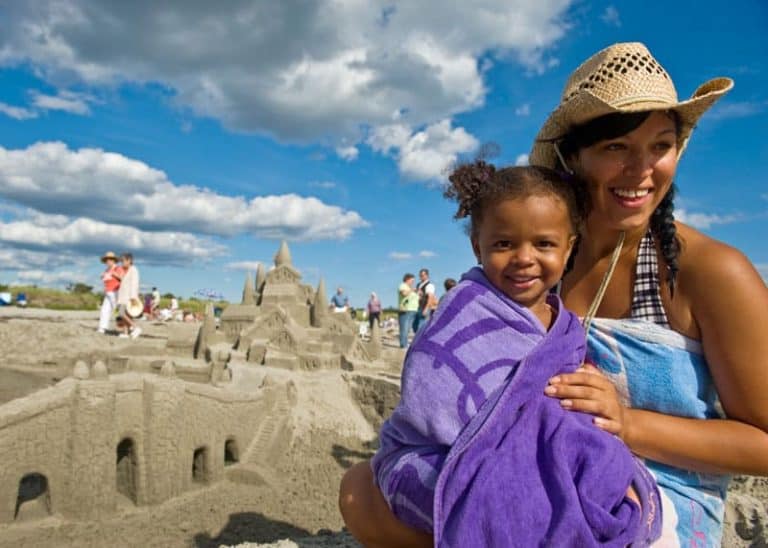25 Galapagos Islands Facts for Travelers (Animals, Geography, History)
Thinking of visiting the Galapagos Islands? The archipelago is famous for its animals, diving, and rugged terrain. In this article, we’ll “dive” into Galapagos Islands facts, including the fascinating geography, history, flora, and fauna of these beautiful islands.
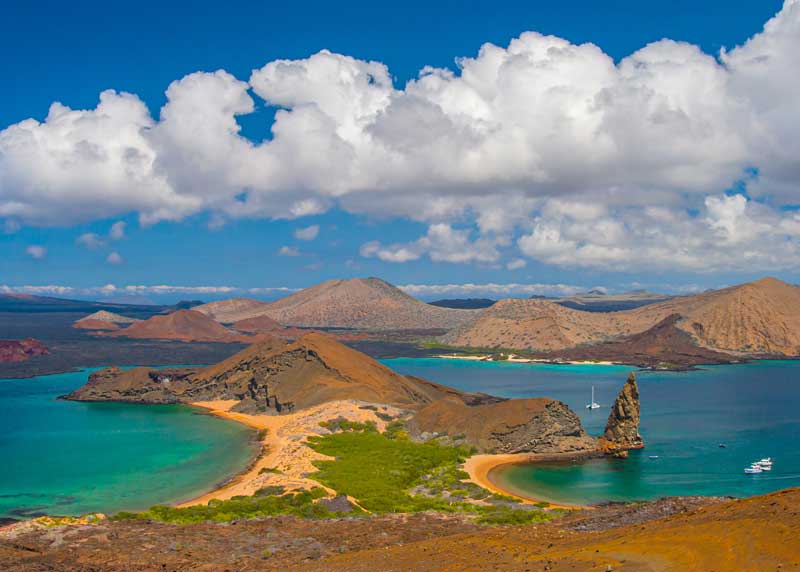
Galapagos Geography and Climate
1. Where are the Galapagos Islands located?
The Galapagos Islands are located in the Pacific Ocean, 605 miles (973 kilometers) off of the coast of Ecuador.
The many islands in the archipelago straddle the equator between the coordinates 1°40’N-1°36’S and 89°16′-92°01’W (the first number is degrees, the second is minutes).
The Island of Española is the furthest South, and Darwin Island is the furthest to the North. They are 137 miles (220 kilometers) apart.
The total land surface of all of the islands in the Galapagos Archipelago is 3,040 square miles (7,880 square kilometers).
These islands are spread over 17,000 square miles (45,000 square kilometers) of ocean.
2. How many islands make up the Galapagos Archipelago?
There are 18 larger islands (having a land area of at least 0.39 square miles/1 square kilometer), 3 smaller islands, and 107 islets and rocks.
The largest island is called Isabela, which makes up nearly 3/4 of the entire land surface of the Galapagos Archipeligo. Isabela is one of the youngest islands and is still being formed.
Learn about them all in our Guide to Galapagos Islands Names
3. Are the Galapagos Islands a national park?
The Galapagos National Park was established in 1959. It protects more than 97% of the Islands.
The Galapagos Marine Reserve protects 50,000 square miles (129,499 square kilometers) of the surrounding ocean.
The Galapagos Islands also form an Ecuadorian province.
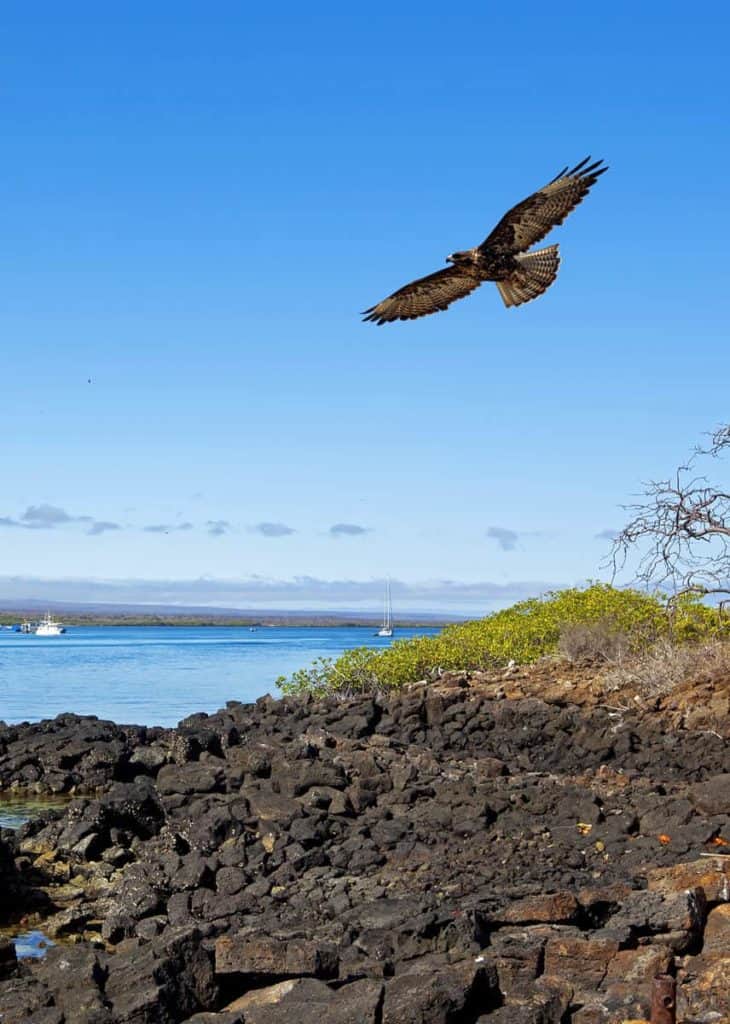
Learn more about Ecuador’s 11 National Parks.
4. Are there volcanoes on the Galapagos Islands? Are they active?
Of the 21 emergent volcanoes in the Galapagos, 13 are considered active.
The Galapagos Islands are located where three tectonic plates meet (Pacific, Cocos, and Nazca plates). That makes the area pretty volcanically active.
The islands themselves were formed by volcanic activity.
Here are the 5 most recent eruptions as of the time of writing:
- La Cumbre (2020)
- Sierre Negra (2018)
- Wolf (2015)
- Cerro Azul (2008)
- Alcedo (1993)
5. What is the weather like in the Galapagos? Are there different seasons?
The Galapagos Islands are located where 5 ocean currents meet. One of them, the Humboldt Current, brings in cold waters. So although the islands are located at the equator, they are not as tropical as you may expect.
The colder season runs from June to November. You can expect temperatures from 65-75°F (18-23°C). This time of year is known for its drizzle and fog.
The islands are also known as the Enchanted Islands because as you sail away, the islands seem to disappear into the mist.
The warmer season is from December to May. The wind dies down, and the sun shines. But there can still be the occasional rainstorm. During these months the temperature varies from 70-80°F (21-27°C).
Here are weather charts for Galapagos and mainland Ecuador.
Galapagos History
6. How were the Galapagos Islands formed?
Unlike some other islands that were formed by breaking off of larger land areas, the Galapagos Islands were formed by means of volcanic activity.
Over time, layer after layer of magma formed into rocks, which eventually became islands.
7. When did Charles Darwin visit the Galapagos?
Charles Darwin spent 5 weeks on the Galapagos Islands in 1835.
8. Who was the first explorer to set foot on the Galapagos?
There is some dispute as to whether or not the Incas, or an earlier people, ever made it to the Galapagos Islands.
A few artifacts have been found, but no building ruins or graveyards have been located. This suggests that while they may have visited at one point, they did not settle on the islands.
The first recorded human to set foot on the Galapagos Islands was Tomás de Berlanga. He was a Spanish noble, and the bishop of Panama.
His discovery of the Islands happened by accident when the ship he was sailing on was blown off course (on route from Panama to Peru). This was in 1535. He was not impressed by what he saw.
9. Why are they called the Galapagos Islands?
By the year 1570, the Galapagos Islands were put on the map, quite literally. So they needed a name. The name Galapagos is derived from the old Spanish word for tortoise.
There is some debate that the word Galapagos comes from the old Spanish word for saddle, as it looks like Giant Tortistes are wearing saddles.
But with some research, it appears that the saddle is named after the tortoise, and not the other way around.
Interesting, the islands are officially known as the Archipiélago de Colón in honor of Christopher Columbus (Colón being his Spanish name).
He himself never visited the islands. Instead, the name was given to the islands by the Ecuadorian government in 1892, on the 400th anniversary of the voyage of Columbus.
10. WWII Facilities
During World War II, Baltra Island was used as a naval base by the US military. It was part of a geographical triangle of bases (the other two being in Salinas in mainland Ecuador, and in Nicaragua).
The purpose was to patrol the Pacific Ocean for enemy submarines in an effort to protect the Panama Canal.
The People of Galapagos
11. Do people live on the Galapagos Islands?
Due to the remote location of the Galapagos Islands, human habitation has only occurred in relatively recent history. In 1832 the islands were annexed by Ecuador from Spain, and a few settlements and penal colonies were established.
In the 1960s, increasing numbers of mainland Ecuadorians began moving to the Galapagos Islands. They were drawn there by both the fishing industry and opportunities to work in the tourism sector. Now there are 25,000 people living there year-round.
The majority live on the island of Santa Cruz. The largest town there is Puerto Ayora. Other islands with human inhabitants are Baltra, San Cristobal, Isabela, and Floreana.
12. What is the local food like?
If you like seafood, the Galapagos Islands will not disappoint you. The seafood there is fresh, varied, and plentiful. Try langostino encocado (lobster in a creamy coconut sauce), ceviche (a dish prepared by curing raw seafood in lemon/lime juice), and encebollado (a seafood soup).
Exotic fruits are regularly shipped in from Ecuador and used in making refreshing fruit juices and ice creams.
As a word of caution, be careful which vendor you purchase food from. Drinking the tap water is not recommended. And the last thing you would want is to spend your vacation time with a stomach bug.
13. What language do they speak on the Galapagos Islands?
As part of Ecuador, the official language of the Galapagos Islands is Spanish. However, you may be able to find a tour guide or hotelier who speaks English, French, or German.
Galapagos Flora and Fauna
14. What is unique about the animals?
Because the Galapagos Islands were never part of the main continent, the animals that are there had to either fly, swim, or float over there.
Most of the animals are pretty fearless, as there is no threat from large predators. This is great for tourists, as you can get pretty close (but of course, you still have to respect their boundaries).
Due to the remoteness of the islands, and the unique terrain, more animals are endemic to the islands than not.
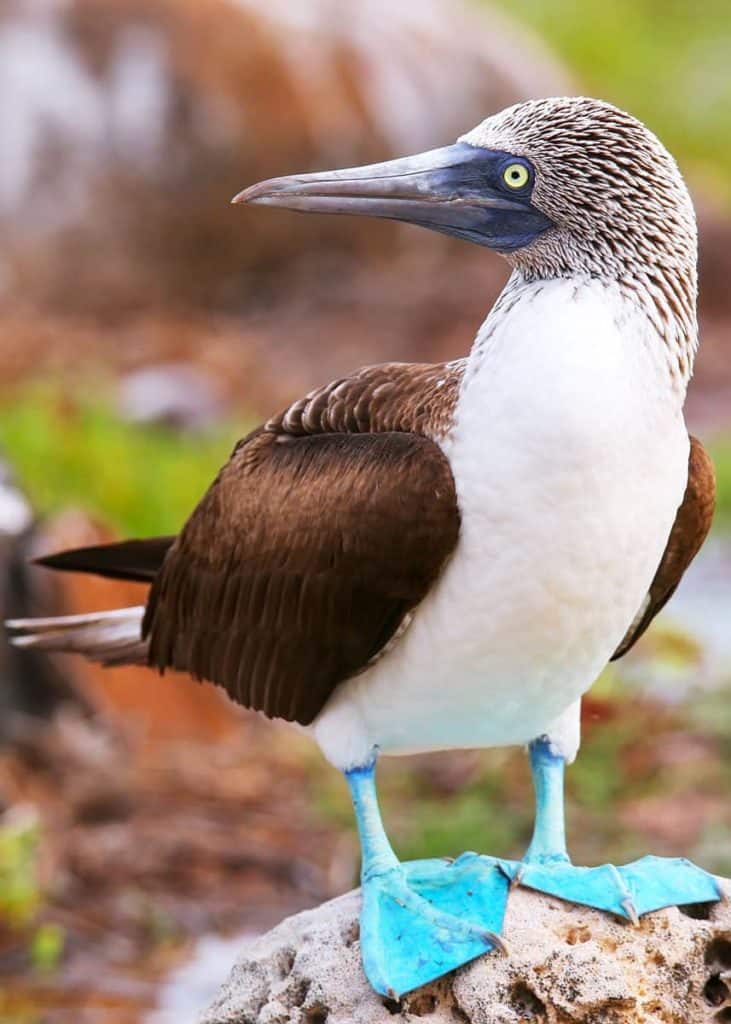
Learn more about the adorable blue-footed booby, red-footed booby, and the Nazca booby.
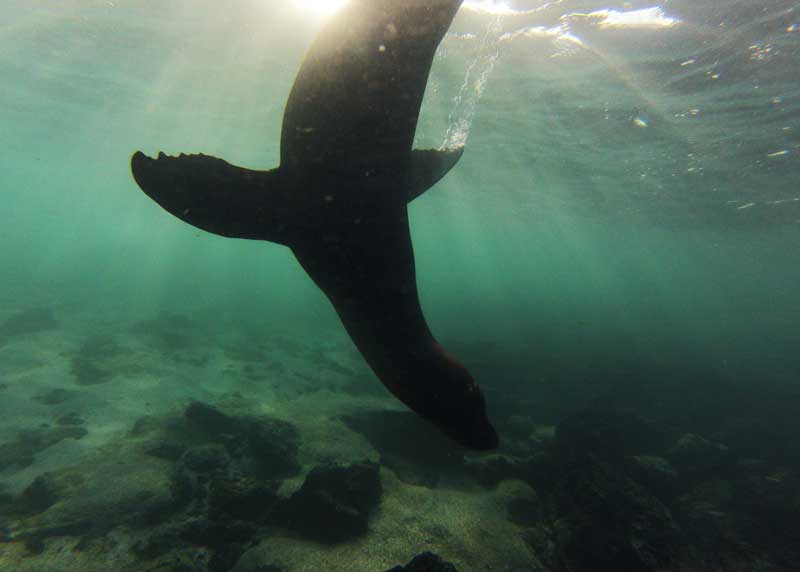
15. Which animals are endemic to the Galapagos?
To get an idea of the biodiversity in the islands, here are some statistics. Of the 22 species of reptiles found throughout the islands, 20 are endemic (found nowhere else in the world). There are 6 species of land mammals, 5 of which are endemic.
Of the 19 species of sea birds, 6 are endemic. When it comes to land birds, 22 out of 29 species are endemic to the Galapagos. Of the 6 species of marine mammals, 2 are endemic. (Statistics from WWF).
Make sure to look out for Sally Lightfoot crabs, lava lizards, marine iguanas, the Galapagos sea lion, and of course the giant Galapagos Tortoise.
Learn more about the waved albatross – the largest bird on the Galapagos Islands.
16. Are there penguins there?
On the islands of Isla Fernandina and Isla Isabela, you will find the only penguins that live north of the equator. Fittingly it is called the Galapagos Penguin (Spheniscus mendiculus).
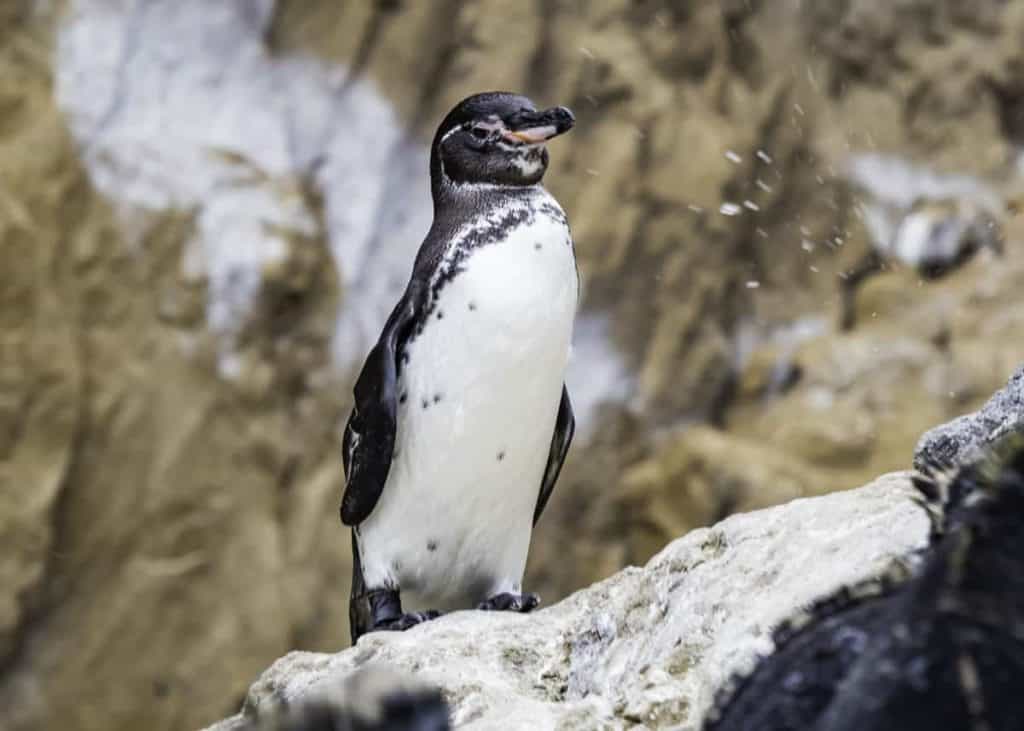
Learn more: Guide to Galapagos Islands Animals.
17. What about the plant life?
The plant life and terrain vary greatly depending on where you are. The coastal zone contains mangroves, as well as vines, grasses, and shrubs which have adapted to the seawater.
The arid zone is a semi-desert area located between the beach and higher elevation. It contains deciduous trees, shrubs, and lots of cacti.
As you go higher in the mountains, there are areas of could forests that are rich in mosses, ferns, and epiphytes.
Unfortunately, some areas have lost their rugged beauty as humans have destroyed them in pursuit of farmland.
Visiting the Galapagos Islands
18. How do you get to the Galapagos Islands?
The only way to get to the Galapagos Islands is by air. Flights depart from mainland Ecuador from either Quito (UIO) or Guayaquil (GYE). There are no international flights that go to Galapagos.
There are two primary airports in the Galapagos Islands.
- The first is Seymour Airport (GPS) on Baltra Island.
- The other is San Cristobal Airport (SYC).
- There is a smaller airport on Isabela Island, with flights to the two other island airports.
From the airport, you can take a bus to the dock, where you will either board a cruise or take a ferry boat to your final destination.
19. Are there hotels? Where should I stay?
You can find hotels, hostels, B&Bs, and camping options on the inhabited islands in the Galapagos. It is important to note that it is not permitted to stay overnight on the islands and islets that are not inhabited.
A quick google search will provide you with lots of options, ranging from the rustic to the luxurious.
20. Sightseeing
All of the islands are a haven of natural beauty. Take time to go hiking, walk the beaches, go scuba diving, watch the animals, or explore one of the small towns. Beauty awaits you around every corner.
21. Hike An Active Volcano
On Isabela Island, you can hike Sierra Negra, an active volcano. It stands 3,687 feet (1124 meters) in elevation.
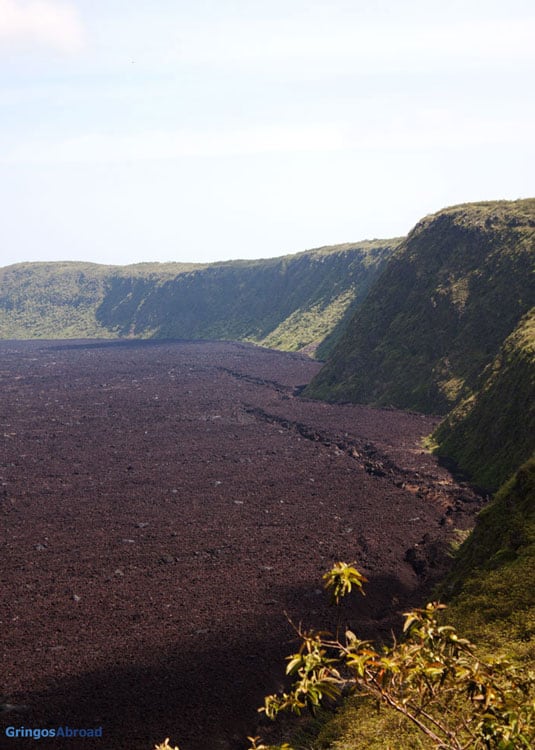
22. Tortuga Bay
Tortuga Bay is a sheltered swimming area on Santa Cruz Island. Because of the calm water, it is a favorite for families.
It is a guide-free outing, that you can access from Puerto Ayora, the main town on the island. It is a beautiful walk on a lava stone path. You can see local plant life, along with lava lizards and lots of birds.
Here’s the full guide to visiting Tortuga Bay.
23. Las Grietas
Las Grietas is an in-land swimming area, located inside an earth fracture. The water is brackish, as it is fed by the ocean.
Located a short walk from Angermeyer Point, on Santa Cruz Island.
Here’s our guide to visiting Las Grietas.

24. Post Office Bay
Located on Floreana Island is perhaps the most unique post office in the world. Back in the 1700s, fishermen would place letters in a barrel for passing ships to pick up and deliver.
The barrel is still in use, with thousand of letters passing through it each year. There is no postage fee, as it relies on the honesty and reliability of strangers.
25. Star Gazing
While you are in the Galapagos Islands, make sure to look up. With so little light pollution, it is a great place for some stargazing.
Because of its location on the equator, you can see constellations in both the northern and southern hemispheres at the same time.
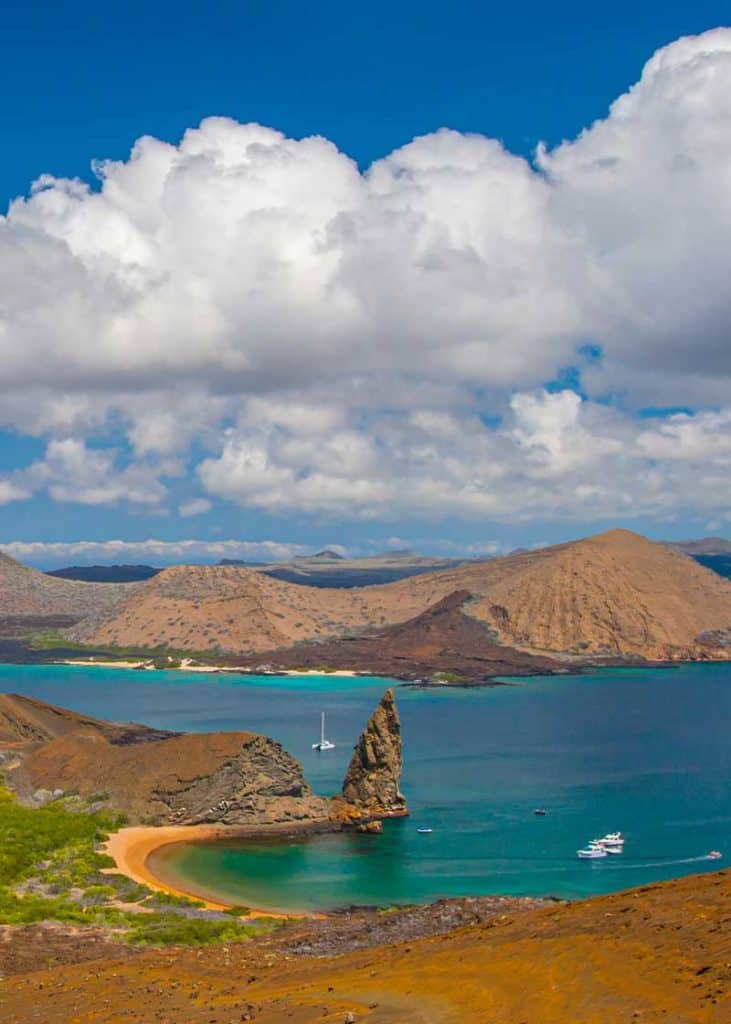
Your Turn:
Have you been to the Galapagos Islands? What other facts would you add to my list? Let me know in the comments below.

